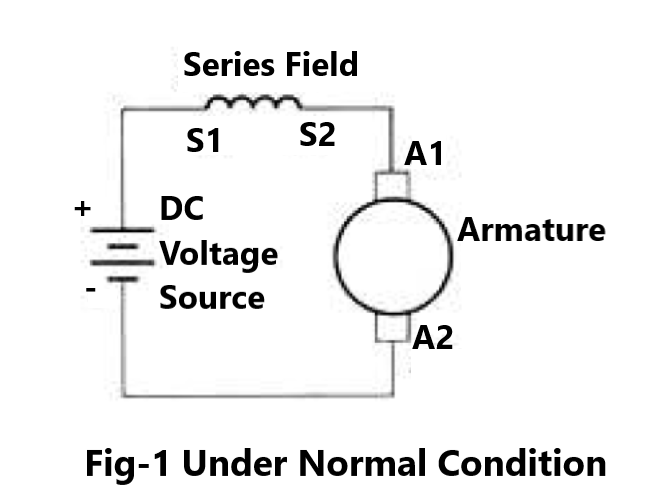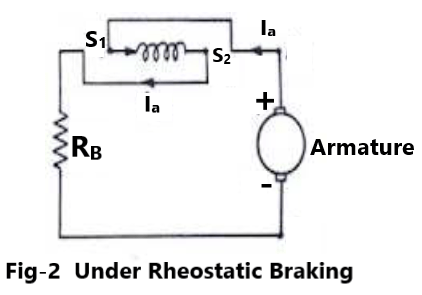Rheostatic Braking of D. C. Series Motor


Under normal running condition, the armature winding and series field winding are connected in series with each other and then supplied from DC supply. This is “motoring” operation. The motor takes electrical power from DC voltage source. The motor current flows through series field winding (from S1 to S2) and armature winding(from A1 to A2). The back emf induced in armature winding has polarity such that A1 is positive and A2 is negative.
When braking is required, two changes are made in circuit configuration:
i) Input DC source is disconnected and replaced by external resistance RB, as shown in Fig. 2.
ii)To maintain the polarity of back emf induced in armature winding same, the series field winding connections are reversed. Such connection maintains field current supplied by armature winding in the same direction as before during motoring.
In absence of input DC source, now the kinetic energy stored in mechanical load drives the motor to operate it as generator and generated electrical power is supplied to external resistance RB. In this way, the stored kinetic energy in mechanical load is converted to electrical energy and supplied to external resistance RB. During every energy conversion process, an opposition is always there. Here also during braking, the current carrying armature conductors in magnetic field experience force opposing the motion and speed is therefore reduced.
Value of external resistance connected in armature circuit must be less than the critical value otherwise there will be no excitation.

Pingback: D.C. Motor: Working, Types, Application and their fault
Pingback: Objective (MCQ) question on DC Motors
It’s in reality a great and useful piece of info. I’m happy that you simply shared this useful information with us. Please keep us up to date like this. Thank you for sharing.
Great post. I was checking constantly this weblog and I’m impressed! Extremely helpful info specially the remaining part 🙂 I handle such information much. I was seeking this certain information for a long time. Thank you and good luck.
Thanks for appreciation.
For more electrical Knowledge, Please follow my Insta/Telegram/Whatsapp group.
Now, my focus on spread my website content to more readers.
To boost my moral, Please share my website to your friends.